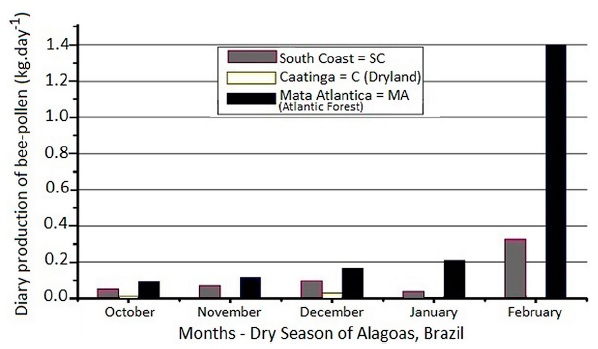ABSTRACT
Bee pollen results from the mixture of pollen and floral nectar with the salivary substances of bees and has increasingly been used as a food with therapeutic properties. In this study, 30 samples of bee pollen from Apis mellifera apiaries in three mesoregions of Alagoas (Brazil) - Mata Atlântica, South Coast and Caatinga, were collected during the dry season of 2008/09 and analysed. Mata Atlântica and Caatinga had good production of bee pollen. In the same season, Mata Atlântica contained a higher diversity of pollen types for feeding bees with a predominance of herbaceous pollen (63%), whereas the Caatinga samples contained monofloral pollen. Physicochemical data were analysed with the nonparametric Kruskal-Wallis statistical test. The Caatinga samples were analysed to determine their contents of total phenolic compounds (25.85 ± 10.80 mg gallic acid eq/g) and flavonoids (45.62 ± 32.19 mg quercetin eq/g) and their antioxidant activity (for instance, 70.62 ± 4.50% in the DPPH test), which were possibly affected by the environmental conditions of this biome.
Index terms:
Apis mellifera; total phenolics; floral origin.

 Thumbnail
Thumbnail
 Thumbnail
Thumbnail

